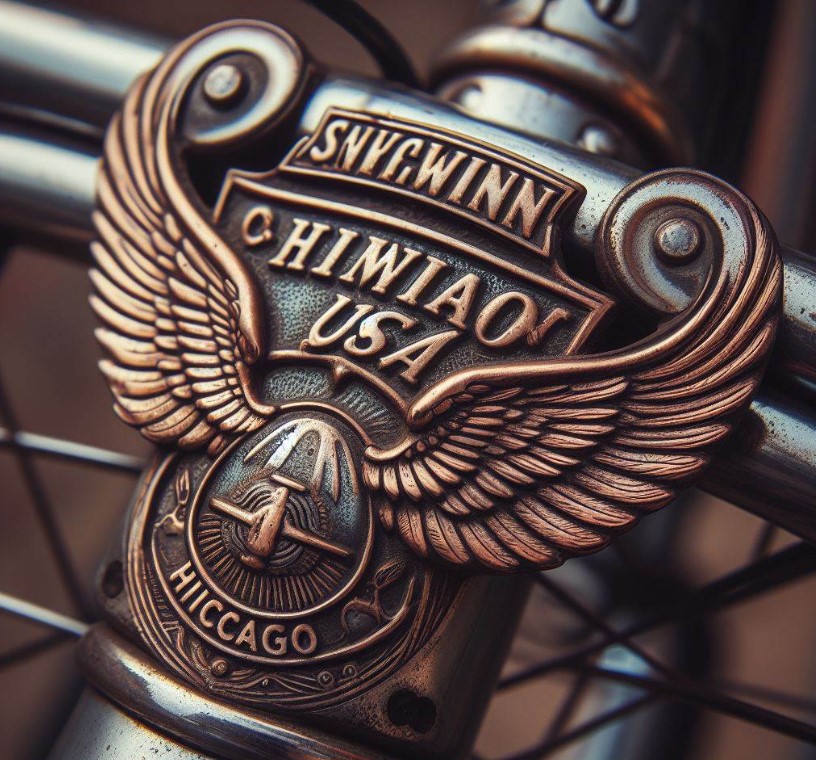How Can You Tell If A Schwinn Bike Is Vintage? Explained
When I was little, my grandpa showed me his old Schwinn bike in the garage, telling me stories about how bikes were in his day. It made me curious about how you can tell those old bikes from the new ones. This article will dive into How Can You Tell If A Schwinn Bike Is Vintage? and the exciting world of Schwinn bikes, especially how to spot a vintage one, starting with the unique clues like serial numbers and special designs that make them stand out from the rest.
Key Takeaways
- Serial numbers are crucial for dating Schwinn bikes.
- Unique design elements can indicate a bike’s era.
- Model names and features vary across different periods.
How Can You Tell If A Schwinn Bike Is Vintage?
To find out if a Schwinn bike is vintage, you can check the bike’s serial number, look at its design and parts, and know a bit about Schwinn’s history. Vintage Schwinn bikes have serial numbers in places like under the bike or on the frame, which tell when the bike was made.
The design, like the shape of the frame and the type of seat, can also show if it’s an old Schwinn. Plus, knowing which models were made when helps a lot. So, if you find a bike with a cool old number, a design that looks like something from an old movie, and it matches a famous Schwinn model, you’ve probably got a vintage one!

Serial Numbers: The First Clue
Locating the Serial Number
The serial number on a Schwinn bike is a telltale sign of its age. Typically, these numbers can be found under the bottom bracket, on the left rear dropout, the head tube, or the seat tube. Each position correlates with different production periods, offering a preliminary clue about the bike’s vintage status.
Decoding the Serial Number
Once located, decoding the serial number is your next step. Schwinn serial numbers from before 1970 often follow a distinct pattern, with the first letter indicating the month of manufacture and the second letter the year.
Post-1970, the company shifted to a system where the first three digits represent the day of the year and the next digit the year of manufacture, making it a bit more challenging but still a reliable indicator of age.
Design and Components: Distinctive Features
Frame and Build Quality
Vintage Schwinn bikes boast a robust frame and exceptional build quality, with many models featuring the iconic cantilever frame design. The weight and solidity of the frame, combined with unique welding patterns, can often hint at a bike’s vintage status.
Specific Component Designs
Components such as the handlebars, seat, and wheels can also provide clues. For instance, Schwinn’s Stingray models, popular in the 1960s and 1970s, featured banana seats and ape-hanger bars, distinct from the more streamlined designs of modern bikes.
Model-Specific Characteristics
Popular Vintage Models
Schwinn has produced several iconic models that are highly sought after by collectors. Bikes such as the Schwinn Phantom, Varsity, and Continental have unique features and aesthetics that can help identify their vintage status. Knowledge of these models and their production years is essential for accurate identification.
Catalog Comparison
Comparing the bike in question with old Schwinn catalogs can be incredibly helpful. These catalogs offer a wealth of information, including images, descriptions, and specifications of bikes produced in different years, serving as a benchmark for identification.
Historical Context and Evolution

The Schwinn Legacy
Understanding Schwinn’s history and its impact on the cycling world provides valuable context for identifying vintage bikes. Founded in 1895, Schwinn became synonymous with quality and innovation, introducing several features and models that became industry standards.
Technological Advances and Design Shifts
The evolution of Schwinn’s design philosophy over the decades, marked by technological innovations and shifts in consumer preferences, influences what constitutes a vintage model. For example, the transition from road bikes to mountain and BMX styles in the late 20th century reflects broader trends in cycling.
Preservation and Restoration: Signs of Authenticity
Original Components
A vintage Schwinn bike often retains many of its original components. While some wear and tear are expected, the presence of original parts like the saddle, pedals, and handlebars can confirm a bike’s age and authenticity.
Condition and Patina
The overall condition of the bike can also provide clues. Vintage bikes might show signs of age, such as patina on the metal parts, but excessive rust or damage might indicate neglect rather than authentic vintage status.
Community and Collector Insights
Expert Opinions
Engaging with the vibrant community of Schwinn enthusiasts and collectors can offer invaluable insights. These individuals often possess the experience and knowledge to identify subtle nuances that distinguish vintage models from reproductions or fakes.
Online Resources and Forums
Numerous online resources, forums, and social media groups dedicated to vintage Schwinn bikes exist. These platforms can be a treasure trove of information, offering serial number databases, model identification guides, and personal anecdotes from collectors.
Alternative Identification Methods
Beyond serial numbers and design features, there are other ways to confirm the vintage status of a Schwinn bike. These methods provide additional avenues for enthusiasts to explore, ensuring a more comprehensive approach to identification.

Paint and Decals
The paint color, quality, and the decals on a Schwinn bike can offer significant clues about its age. Vintage Schwinn bikes often feature original paint in colors that were specific to certain models and years.
Moreover, the style and placement of decals changed over time, reflecting the brand’s evolving design aesthetic. Authentic decals, especially those in good condition, can be a strong indicator of a bike’s vintage status.
Catalog and Advertisement Archives
Utilizing Schwinn’s extensive catalog and advertisement archives is another method for identifying vintage bikes. These archives, available in libraries, online forums, and collector websites, feature detailed information about bike models, including specifications and marketing materials from different years. By comparing a bike to these archives, enthusiasts can narrow down the production year and authenticate its vintage status.
Maintenance and Care of Vintage Schwinn Bikes
Proper maintenance and care are crucial for preserving the integrity and value of a vintage Schwinn bike. This section provides guidance on how to keep these classic bicycles in prime condition.
Regular Cleaning and Inspection
Regular cleaning and inspection are vital for maintaining a vintage Schwinn bike. It involves gentle cleaning to remove dirt and grime, checking for signs of rust, and ensuring that moving parts are well-lubricated. Special attention should be paid to preserving original components, as these are key to the bike’s authenticity and value.
Professional Restoration
For bikes in need of more significant repair or restoration, consulting with a professional who specializes in vintage bicycles is advisable. These experts can offer services ranging from paint restoration to part replacement, always with an emphasis on maintaining the bike’s historical integrity. Professional restorers can also provide valuable advice on how to care for these bikes to ensure they remain in excellent condition for years to come.
Conclusion: The Joy of Vintage Schwinn Bikes
Identifying a vintage Schwinn bike is both an art and a science, requiring attention to detail, a deep appreciation of history, and a passion for cycling. These bikes are not just modes of transportation; they are pieces of Americana, embodying the innovation, quality, and spirit of a bygone era.
Whether you’re a seasoned collector or a new enthusiast, the journey of discovering and preserving a vintage Schwinn bike is a rewarding adventure that connects you with cycling’s rich heritage.
Frequently Asked Questions
How can I verify the authenticity of a vintage Schwinn bike?
Authenticity can be verified by checking the bike’s serial number against Schwinn’s records, examining original components, and comparing the bike to images and specifications found in Schwinn catalogs and advertisements. Authentic bikes will closely match these records and retain many of their original parts.
What makes Schwinn bikes considered vintage?
A Schwinn bike is considered vintage if it was produced before the 1980s, showcasing the unique design, craftsmanship, and features characteristic of the era. The age, rarity, and condition of the bike also contribute to its vintage status.
Where can I find the serial number on a vintage Schwinn bike?
Serial numbers on vintage Schwinn bikes can be located in several places, including the bottom bracket, the left rear dropout, the head tube, or the seat tube. The placement varies depending on the production year and model.
Can I ride my vintage Schwinn bike, or should it be kept for display only?
Vintage Schwinn bikes can be ridden, provided they are in good working condition. However, it’s important to consider the bike’s historical and monetary value before using it for regular rides. Some collectors choose to preserve their bikes in original condition for display purposes.
How do I determine the value of my vintage Schwinn bike?
The value of a vintage Schwinn bike is determined by its model, age, condition, and rarity. Consulting with experts, comparing similar models in collector’s forums, and professional appraisals are reliable ways to ascertain a bike’s value.

Welcome to the exhilarating world of Matt Rex, a professional car racer turned renowned vehicle enthusiast. Immerse yourself in his captivating blog as he shares heart-pounding adventures, expert reviews, and valuable insights on cars, trucks, jets, and more. Fuel your passion for speed and discover the beauty of vehicles through Matt’s engaging stories and meticulous expertise. Join the ever-growing community of enthusiasts who find inspiration and expert advice in Matt Rex’s blog—a digital hub where the thrill of speed meets the pursuit of knowledge.







